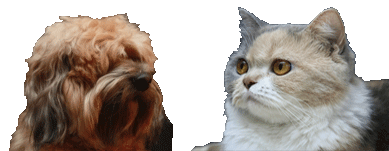Information about the Malinois
The Belgian Shepherd Dog (Malinois) is a breed of dog, sometimes classified as a variety of the Belgian Shepherd Dog rather than as a separate breed. The Malinois is recognized in the United States under the name Belgian Malinois. Its name is the French word for Mechlinian, which is in Dutch either Mechelse herdershond (shepherd dog from Mechelen) or Mechelaar (one from Mechelen). These dogs are popular for K-9 use in police departments, as are German Shepherds.
Like all Belgian Shepherds, the Malinois is a medium-sized and square-proportioned dog in the sheepdog family. The Malinois has a short mahogany coat with black markings. It has black erect ears and a black muzzle. It has a square build in comparison to the German Shepherd.
Due to its history as a working dog (i.e., being bred for function over form), the Malinois can vary greatly in appearance. The acceptable colors of pure-bred Malinois are a base color fawn to mahogany and tan with a black mask and black ears with some degree of black tipping on the hairs, giving an overlay appearance. The color tends to be lighter with less black agouti or overlay on the dog’s underside, breeching, and inner leg. Dogs with grey and black shorthairs used to meet the Malinois standard, but are no longer considered to do so.
The other varieties of Belgian Shepherd are distinguished by their coats and colors: the Tervuren is the same color as the Malinois but has long hair, the wire-coated Laekenois is fawn and lacks the black mask and ears, and the Groenendael (registered as Belgian Sheepdog by the American Kennel Club) has long hair and is solid black. There are (occasionally and historically) solid black, black-and-tan (as with Dobermans and German Shepherds), or other colored short-haired Belgian Shepherds, but these are not technically Malinois.
If a dog represented as a Malinois is brindle (clear stripes of different colored hair) it is probably a Dutch Shepherd Dog or a mixed breed, although the possibility exists that it is a throwback, this is a common misconception with the appearance of the breed.
Malinois dogs are about 24-26 in (61-66 cm), while Females are about 22-24 in (56-61 cm) at the withers. Female Malinois are said to average 25-30 kg (55-65 lb), while sires are heavier at 29-34 kg (65-75 lb). They are squarely built.
In Belgium, Germany, the Netherlands and other European countries, as well as in the United States, Canada and Australia, the Malinois is bred primarily as a working dog for personal protection, detection, police work, search and rescue, and sport work (Belgian Ring, Schutzhund, French Ring, Mondio Ring). The United States Secret Service and Royal Australian Air Force use the breed exclusively. In the United States Armed Forces, Malinois (along with German Shepherds) are preferred breeds for use as working dogs.
The dog is also used extensively by Unit Oketz of the Israel Defense Forces. Oketz favors the slighter build of the Malinois over that of the German Shepherd and Rottweiler which were employed formerly. Malinois are the perfect size to be picked up by their handlers, while still being able to attack their enemies and for their shorter coats and fair and neutral colors making them less prone to heatstroke, all these are advantages over the previously used dog breeds.
Well-raised and trained Malinois are usually active, friendly, protective and hard-working. Many have excessively high prey drive. Some may be excessively exuberant or playful, especially when young. They can be destructive or develop neurotic behaviors if not provided enough stimulation and exercise. These are medium sized, strong dogs that require consistent obedience training, and enjoy being challenged with new tasks. They are known as being very easy to obedience train, due to their high drive for rewards.
Malinois can compete in dog agility trials, obedience, showmanship, flyball, tracking, and herding events, and are one of the most popular breeds used in protection sports such as schutzhund, French Ring, and Mondio Ring. In America, herding instincts can be measured at noncompetitive herding tests. Belgian Shepherds exhibiting basic herding instincts can then be trained to compete in herding trials.
[Back]

